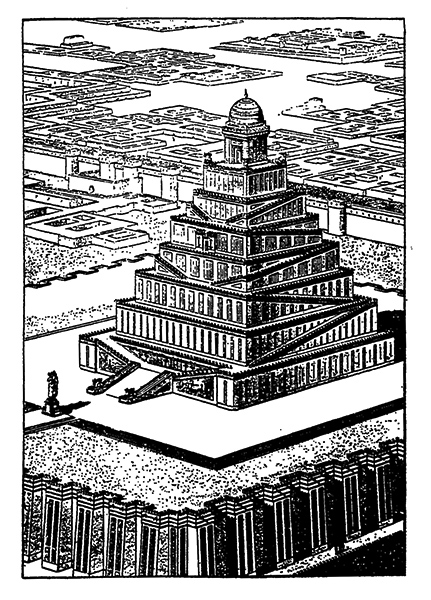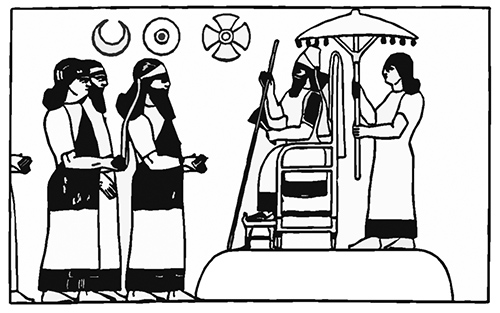We know not how old or whence emanated the ritual of Freemasonry, but we do know that when we are in search of historical parallels to almost any of its allusions we must lose ourselves in a past so distant that we can only wonder at the fidelity with which certain traditions have been preserved. However much we owe to the Biblical account of Israel’s great monarch and his splendid achievements in art, letters, and statesmanship, he is the subject of innumerable Oriental traditions, which are unknown to Holy Writ and connect his name with a wide range of associations outside the classic ones to which we are most accustomed.

His triple name of Sol-Om-On we derive from the Septuagint, which was a translation of the Hebrew sacred books into Greek, accomplished by a commission of learned Alexandrian rabbis sent to Jerusalem for the purpose by King Ptolmey Philadelphus with the aid of a commission appointed by the then High Priest Eleazar, about B .C. 246. These men were not only talented scribes, but were skilled in the secret science of their day, so that they were able to translate this wonderful old name back into the same form in which it had been revered among the Chaldean mystics for many centuries previously.
Irrespective of its application to a historical character, the name “Solomon” was a cabalistic composition intended profoundly to symbolize Divine Wisdom. The outward form of the name expressed precisely the same symbolism as the three principal officers of the Masonic lodge,-the sun rising in the east (Sol), the sun at meridian in the south (Om), and setting in the west (On). These three names, taken separately, were also very old, and in a variety of ways connected all that men had discovered of the wonders of the universe, showing that they were but varying aspects of the great Jehovah.
The discoveries of learned travelers, especially American savants connected with the University of Pennsylvania, have established the facts beyond doubt that Jehovah was worshiped centuries before the time of Abraham by the Mesopotamian peoples, and the Divine Wisdom (Sol-Om-On), recorded in the Babylon cuneiform inscriptions as Saimanu, with the word Saror King added, when the name was used as that of a monarch. We get it in our histories translated into Shalmanesar, and the Hebrews alliterated it into Sar-Shalom or Prince of Peace.
Without entering upon the curious considerations that, from what are really most interesting mathematical puzzles, produced these famous names, the Solomon’s of Babylonia actually possessed Temples dedicated to Divine Wisdom, which were schools of instruction in the arts and sciences, having as the final assembly hall of the priestly initiates a Middle Chamber reached by seven successive steps or stages.
The remains of a number of these old Wisdom Temples, of which the Biblical Tower of Babel was one of the principal, have been found in ruinous condition and buried in the debris of their fallen summits until the whole, prior to excavation, presented the aspect of shapeless mounds.
It was the belief of these ancient peoples that all things affecting humanity were governed by the planets, and so all things mundane were arranged as far as possible in series of seven so as to put each one under the ruler ship of a different planet.

The Temples in question resembled a nest of boxes, in that they were square edifices placed one upon the other on a diminishing scale. Their disposition from the bottom up was that of the planets in their respective order of velocity. Saturn, the slowest, was represented at the bottom by a black chamber; then came an orange-hued Temple for Jupiter, then a red one for Mars. Above this was the Temple of the Sun covered with plates of gold, then that of Venus, of a pale yellow color, and the last of the initiations took place in the literally Blue Lodge, dedicated to the planet Mercury, of whom the old rituals told us that the three lesser lights were “the Sun, Moon, and Mercury.” Above this was the silver-covered Temple of the Moon god, where the fully initiated hierophant took his place among the astronomers who studied the heavenly bodies from this elevated Middle Chamber.
Ancient sculptures remain, showing various orders of neophytes in such reverent attitudes that we are unable to wonder when we behold other scenes from the vicinity of these old Temples, in which the dramatic action of some of our most intimate degree work is shown with fidelity and spirit.
Contents – The Beginning of Masonry
Previous – The Working Tools of EA
Next – Dedication of the Lodge
